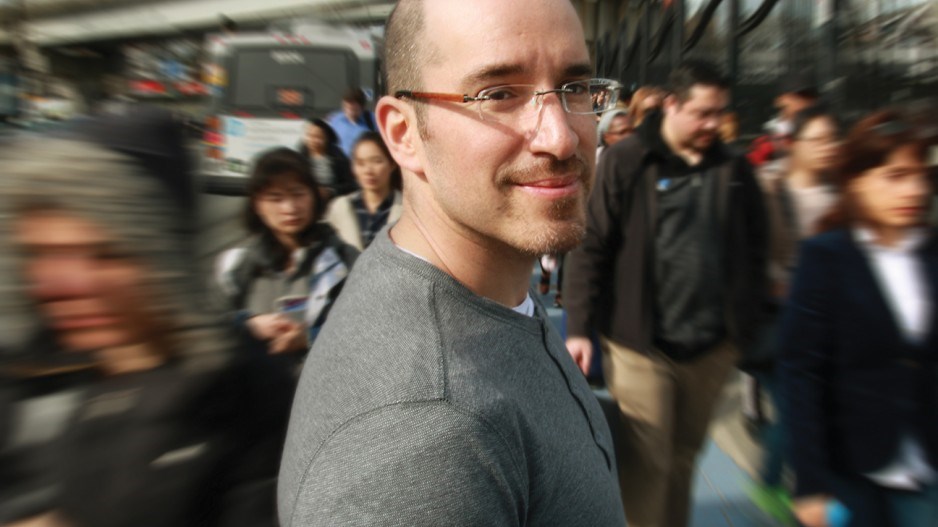For a city long considered an afterthought in Lower Mainland’s big picture, Surrey’s transformation into a bustling technology and health-care hub with a booming population and a frenzy of real estate development has been impressive.
On April 6 the provincial government announced the creation of a health technology accelerator that will set up shop in Surrey’s Innovation Boulevard, which is a joint effort by the BC Innovation Council and IBM Canada.
The announcement itself isn’t groundbreaking – the government-funded health-care hub is the province’s 15th – but, seen in the perspective of other announcements in Surrey in the past few years, it adds to an emerging picture of a city rich in talent, capital and infrastructure dollars looking to lead the way in the Lower Mainland.
Erick Villagomez, an adjunct professor at Kwantlen Polytechnic University’s (KPU) Wilson School of Design and former adjunct professor at the University of British Columbia’s School of Architecture and Landscape Architecture, said while Surrey’s success as a city will always be tied to the larger story of Vancouver’s emergence as a globally recognized metropolis, the key players south of the Fraser River deserve their fair share of credit.
Dianne Watts, the city’s mayor from 2005 to 2014, was an important leader in Surrey’s development, Villagomez said.
“When they write the history of Surrey down the line in more depth, Watts will be a pivotal figure in there,” he said.
Villagomez, who is also the founder of Metis Design/Build and the editor-in-chief of Spacing Vancouver, said Watts’ move to relocate Surrey’s city hall from the suburbs to the downtown core is something that rarely happens in any city – and paid off handsomely in attracting attention to the city from outside investors.
He said Surrey has already set itself on a path to becoming a university town, but has diversified enough that the “university town” label will not be its only defining characteristic.
In November, Simon Fraser University’s (SFU) Surrey campus, one of the partners in Innovation Boulevard, announced it had received approval from the provincial and federal governments for its $126 million investment toward a new building – a five-storey, 15,000-square-metre downtown facility dedicated to energy systems and environmental engineering programs.
SFU president Andrew Petter said the announcement highlighted the Burnaby-based university’s focus of its attention to the southeast.
KPU, meanwhile, is set to open its fifth campus at 3 Civic Plaza, a 52-storey mixed-use building scheduled to open this October, which features upscale condos and a hotel.
According to data pulled from the City of Surrey’s new Open Data initiative, which allows people to view current city statistics, university enrolment for both SFU and KPU has risen since 2009.
When it comes to funding announcements, the City of Surrey has earmarked significant investment for infrastructure.
Last June the city officially partnered with SFU to incorporate Innovation Boulevard, announcing $1 million over three years to help fund various projects.
“Creative partnerships are the key to solving some of today’s biggest challenges,” said Surrey Mayor Linda Hepner.
One of the biggest challenges for the city has been crime, which for years has hurt business investment.
In 2007, Statistics Canada’s Violent Crime Severity Index (VCSI) for Surrey hit an all-time high, but since then it has dropped along with the agency’s assessments of non-violent and overall crime severity.
At the end of 2016, the overall Criminal Code offence rate in Surrey had dropped 6% from 2015, and the city posted significant improvements in areas such as theft over $5,000 (-39%) and robbery (-27%).
While the homicide rate went up 38%, as 11 murders were recorded compared with 2015’s eight, the overall violent crime rate dropped 16%.
The city credits the drop to a number of high-tech initiatives woven into its overall public safety strategy, which includes a cybersecurity outreach program and Project Iris, which lets businesses register their closed-circuit television cameras directly with the RCMP.
The success in reducing the crime rate might have helped drive an increase in the number of business licences across various industries, according to Surrey’s Open Data.
In 2008 there were 14,604 registered businesses; by the end of 2015 there were 16,377. The biggest gains have come in construction, manufacturing and health care.
Villagomez said as the city grows and combats issues like crime, the “boldness” of the city’s expansion and efforts to redefine itself might have to be tempered.
“Is it possible to be too successful? As of right now … they’re being extremely aggressive in almost every potential way.”
Now that Surrey has drawn attention from a variety of sectors and positioned itself as a bustling hub, the city will invariably face a new set of hurdles in the process, Villagomez said.
“I think they’re doing a really good job of the first part, which is drawing people there,” he said. “Now it becomes, ‘We have all these people here; look at all the problems it’s created.’ And so the long-standing success will hinge on how they solve those new problems.”




